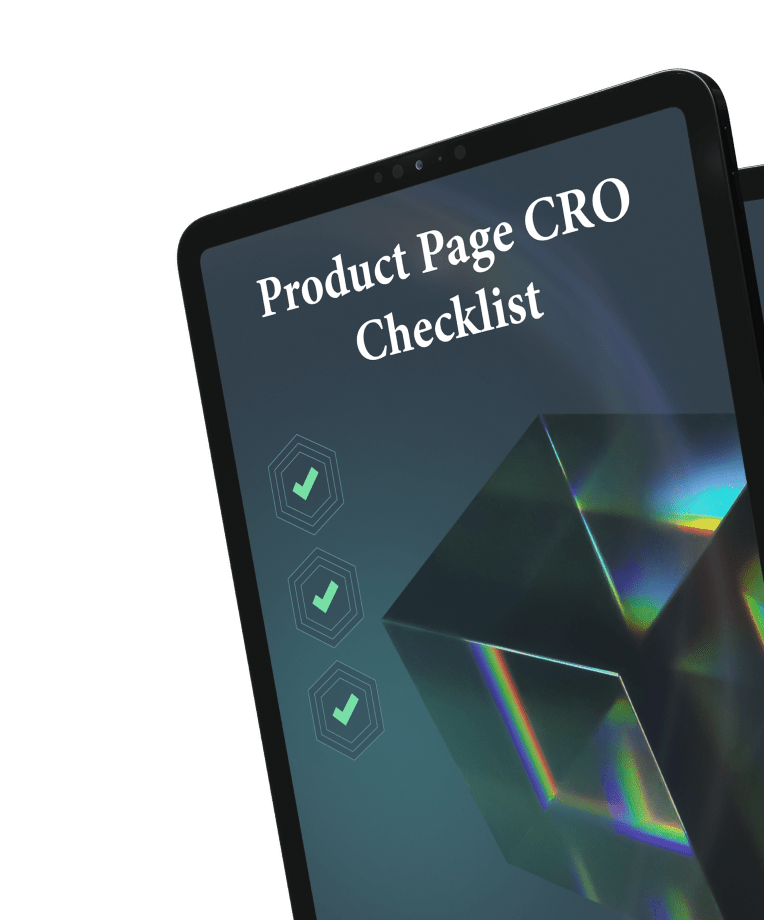Whether you’re an ambitious entrepreneur planning to launch your first online store or an established retailer grappling with low traffic and SEO-related challenges, this article is your essential guide to unraveling the mysteries of SEO and taking your eCommerce venture to new heights.
To unlock the full potential of your online store, we’ve picked the essential 12 key strategies for both beginners and seasoned merchants.
What is SEO for eCommerce?
SEO for eCommerce is a strategic approach aimed at improving the search engine rankings of web retailers. By creating a well-designed website and optimizing it with valuable content, your online store can achieve higher visibility and attract increased traffic from search engines like Google.
Essentially, eCommerce SEO focuses on the optimization of your website to enhance lead generation and drive conversions. It goes beyond simple tasks like incorporating keywords, writing blog posts, and acquiring backlinks. Instead, it requires a deeper understanding of search engine algorithms, adherence to Google’s guidelines, careful analysis of buyer intent, and the strategic implementation of SEO techniques.
Why does it matter?
Attracting new customers can be a daunting task, especially if your website is not easily discoverable by search engines. The challenge lies in the cost associated with capturing customers’ attention. For example, the average cost per click (CPC) for the fashion and jewelry industry is $2.66. Acquiring only a handful of new customers could cost you thousands of dollars.
However, by embracing the power of SEO, you can tap into the potential of organic traffic without spending a dime. Optimizing your website to appear prominently in search engine results pages (SERPs) can be a game-changer. This is incredibly important considering that a substantial 32% of shoppers turn to Google when they are ready to make a purchase.
To secure a slice of that lucrative $6.3 trillion eCommerce pie, we’ve outlined 12 proven SEO strategies that will effectively boost traffic and revenue for your website.
Let’s dive in.
SEO Ready to dominate the search rankings? Let’s make it happen together. Grow organic traffic to boost performance, increase conversions, and sell more. No Black Hat SEO.

#1 Conduct keyword research
The average consumer is exposed to an enormous amount of digital words every day. With such a massive influx of information, it becomes crucial to ensure that your business stands out and can be easily discovered through search engines.
To effectively reach your target audience, the starting point lies in developing a targeted keyword list. Creating a well-crafted keyword list that aligns with user intent is the foundational step in formulating an effective eCommerce SEO strategy.
However, before we delve into the process of conducting keyword research, it’s important to understand the different types of keywords, namely short-tail and long-tail keywords.
Short-tail keywords, also known as head terms, are brief phrases that users commonly enter into search engines. For instance, “pillows” is a short-tail keyword. While they have the potential to generate a substantial amount of traffic, they may not always result in conversions.
On the other hand, long-tail keywords are longer phrases, typically ranging from 26 to 40 characters, that provide a more specific version of the head term. For example, “buy pillows for neck pain” are long-tail keywords. Although long-tail keywords may generate lower volumes of traffic and impressions, they produce a higher rate of clicks and conversions compared to head terms.
How to conduct keyword search
When conducting keyword research, it’s important to broaden your focus beyond just the most popular relevant keywords within your industry. Taking buyer intent into account is crucial. Buyer intent refers to the underlying purpose behind a search query. To identify it, pay attention to the specific phrases and terms that people use when searching online.
There are two primary types of keyword intent:
- Informational keyword intent
These searches involve questions or queries seeking factual information or guidance on a particular subject. Searchers are looking for more details and insights.
- Commercial keyword intent
These searches occur when individuals know what they want to purchase but are unsure where to find it. They may use search phrases like “buy laptop” or “find hotels in Chicago”. Besides, review-based queries also serve as excellent examples of commercial keywords. For instance, a search query like “What is the top smartphone?” showcases clear commercial intent. Users using commercial keywords typically have a stronger intent to make a purchase.
There are several methods to determine keyword intent. You can utilize tools such as Google’s keyword planner, Ubersuggest, or Answer the Public.
To determine the intent follow these steps:
- Examine search engine results pages (SERPs) and pay careful attention to paid advertisements, knowledge graph results, and organic listings.
- Observe the bidding prices for keywords to get insights into the competitiveness of those keywords.
- Evaluate your analytics and identify content with high bounce rates as it may indicate a mismatch with search intent.
#2 Optimize Product Pages
Product pages serve as the lifeblood of your eCommerce business, making it crucial to dedicate significant effort to optimize them effectively. Many online store owners tend to provide only minimal information, including a few lines of text, along with an image or video.

However, to ensure that your product pages are discoverable by Google, it is essential to include more comprehensive information. Here are the key aspects you should focus on:
Product Name
The product name holds significant importance. In most cases, it is also utilized in the SEO title and URL of the product page. Consider incorporating commonly searched terms or keyword phrases into your product names. For instance, if you sell running shoes, make sure to include terms like “trainers” or “sneakers” in the product name. This way, the keyword will also appear in the SEO title and URL.
Images & Videos
Images play a crucial role in enhancing your product pages. Put yourself in your customers’ shoes for a moment – which site would you be more inclined to buy from: one that clearly showcases the product from various angles, a site with no images at all, or one with small and indistinct images?
Not only are images significant for your customers’ experience, but they also play a vital role in search optimization. To optimize your images effectively for search engines, begin with the filename. Avoid using generic names like IMG0015.jpg for your product images. Instead, utilize the product name and primary keyword, such as simple-a-line-satin-wedding-dress.jpg.
If you have multiple views or alternative images of your product, include keywords that people would use when searching for those specific images. Additionally, when adding images to your product page, ensure that you incorporate the product name and relevant keyword in the ALT text for each image.
The result? Your optimized images stand a higher chance of appearing in Google Image Search, as illustrated in the above image, or as additional media displayed in the main search results page.
Enhance your customers’ confidence in their purchasing decisions by incorporating videos into your product pages. These videos can serve various purposes, such as providing basic information about your product (like a commercial), demonstrating how to use the product effectively to achieve desired results, or featuring testimonials from satisfied customers.
Publishing videos on external platforms like YouTube offers an excellent opportunity to attract and educate potential customers about your products. For instance, educational do-it-yourself (DIY) videos can showcase how individuals can create something remarkable by incorporating your products. As viewers engage with the concept of working on such projects, their inclination to purchase related products from your store increases.
Customer reviews
Reviews play a crucial role in equipping shoppers with valuable insights to evaluate the advantages and disadvantages of a product, ultimately influencing their purchasing decisions. They not only assist in building trust with potential customers but also contribute to improving conversion rates.
To encourage customers to leave reviews, you can implement automated messages that are triggered when they make a purchase. Additionally, setting up email campaigns can be an effective strategy to send reminders or special offers to customers who have already left a review on your website. These initiatives help foster a culture of customer feedback and engagement, enhancing the overall reputation of your business and driving higher conversion rates.
FAQ
It’s natural for people to have inquiries about your products. In fact, addressing these questions by providing product-specific FAQ content on your product pages is crucial for driving conversions. When customers have unanswered questions, they may seek answers elsewhere, potentially leading them to make a purchase from a source that does provide the information they’re looking for.
Additionally, having a dedicated FAQ page on your website covering general topics such as website security, shipping procedures, and return policies is highly beneficial.
#3 Simplify the site architecture
When expanding your online store by adding new products and categories, it’s crucial to recognize the significance of site architecture in optimizing search performance. Specifically, you should establish a clear hierarchy of navigation, starting from the homepage, leading to product categories, and ultimately displaying the individual products within them.
A well-defined internal linking structure that is easily navigable and avoids excessive depth is essential for search engine bots to discover and index your pages and products effectively.
Both search engines and website visitors prefer a user-friendly experience where everything is accessible within a few clicks. It is generally recommended to ensure that users can reach any product on your website within a maximum of three clicks starting from the homepage.
#4 Ensure the site is user-friendly
User experience (UX) is crucial for the success of eCommerce stores, and there are various ways to enhance it, such as implementing good design, optimizing site structure, and improving visual aesthetics.
However, UX goes beyond mere visual appeal; it encompasses the functionality and overall usability of a website. It involves factors like navigation ease, intuitive user interface, and the overall satisfaction users derive from interacting with the website.
A key aspect of UX is ensuring that visitors can easily find what they are looking for, keeping them engaged during their browsing experience, and providing them with the best possible encounter on your site.
While it may not be immediately apparent, UX significantly impacts SEO. The experience you provide to users directly correlates with your search engine rankings. This includes Core Web Vitals, a set of factors that Google considers to evaluate a page’s user experience. Google assesses user experience based on three primary metrics:
- Largest Contentful Paint (LCP) that measures how quickly the largest visible elements on a page load, indicating the page’s usefulness to users
- Cumulative Layout Shift (CLS) that measures the stability of buttons and interactive elements on a page after it has fully loaded, ensuring a seamless user experience
- First Input Delay (FID) that measures the time it takes for a page to respond to user input, ensuring responsiveness and interactivity.
There are several steps you can take to improve your Core Web Vitals:
- Enhance site load time
- Ensure that any advertisements do not hinder the user experience
- Make sure your site is interactive and includes clear call-to-action (CTA) elements
Magento
Development Get an online store that sells. Woo customers with a seamless UX that guides them from the first point of contact to the checkout page.

#5 Create backlinks
Generating backlinks is an essential aspect of Ecommerce SEO. Backlinks serve as a ranking signal for Google, influencing the positioning of your pages in search engine results pages (SERPs). The greater the number of backlinks from reputable and high-quality websites, the more authoritative your own site becomes. Obtaining backlinks from reputable websites with extensions such as .com, .gov, and .edu carries significant authority and influence. It is generally more accessible to begin by targeting .com sites for backlinks.
Fortunately, building backlinks for Ecommerce sites doesn’t have to be a daunting task. One effective and ethical method is guest posting on blogs that are relevant to your niche. This involves reaching out to blog owners via email and presenting them with three or more potential guest post ideas.
Other ways to create backlinks include:
- Implementing internal backlinks within your website’s content
- Utilizing social media ads to reach a targeted audience
- Sharing valuable content on social media platforms
- Distributing press releases to announce updates or events
- Engaging in blog commenting and participating in forums, following their guidelines
- Creating informative infographics and sharing them online
- Publishing whitepapers and case studies to establish authority and provide valuable insights
Pro tip: Purchasing paid links goes against Google’s guidelines, and opting for low-cost links often results in questionable quality. When you acquire poor quality links, it can adversely affect your search engine results page (SERP) rankings, diminish traffic to your website, and potentially harm your site’s reputation.
#6 Stick to a simple URL structure
Having a straightforward URL structure not only enhances the user experience but also contributes to the effectiveness of your eCommerce SEO efforts. Furthermore, a simple URL structure makes it easier to share your products on social media platforms and other websites.
To achieve optimal results, it is advisable to ensure that URLs are easily readable and comprehensible to users. For instance, let’s compare the following URLs:
https://www.example.com/articlesonperfumes/ and https://www.example.com/perfumes-articles/. The latter is obviously more readable, meaning that users can quickly understand the content of the page just by looking at the URL itself.
#7 Use responsive design
From an SEO perspective, responsive design plays a pivotal role in improving search rankings and visibility. Search engines like Google highly value websites that provide a positive user experience, especially on mobile devices. In fact, Google now uses mobile-first indexing, where it primarily considers the mobile version of a website for ranking and indexing purposes. If your eCommerce site is not mobile-friendly, it could be penalized in search results.
By implementing responsive design, you create a consistent and optimized experience for users across all devices. This leads to lower bounce rates, higher engagement, longer session durations, and increased conversion rates — all of which positively impact your search engine rankings.
Furthermore, responsive design simplifies your SEO efforts by consolidating your website’s content into a single URL, eliminating the need for separate mobile and desktop versions. This helps to avoid issues such as duplicate content and ensures that your website is easily crawlable and indexable by search engines.
#8 Leverage Schema Markup
Schema markups, or structured data are HTML tags that offer additional information to search engine bots regarding the content present on web pages. Implementing these markups can significantly enhance your eCommerce SEO efforts.
One of the main benefits of using schema markup is the creation of rich snippets. These snippets provide search engines with the ability to display more comprehensive information about specific queries right at the top of search results. Rich snippets aid users in finding relevant information more quickly and easily, as they showcase various types of details.
There are diverse categories of rich snippets, including product markup snippets, music snippets, and review snippets, among others. In the realm of eCommerce, specific schema markups hold particular relevance:
- Product schema. This extension applies to products, services, and organizations. It facilitates the discovery of new products and services through web search queries by presenting detailed product information like images, price, and availability. Moreover, product schema enables the display of product ads on search engine results pages (SERPs).
- Review schema. This schema markup supports online reviews, allowing you to filter by author and title to find specific individuals who have provided reviews on your website or blog posts. It also helps searchers find relevant product reviews
- Product availability schema. This markup presents a list of available products for purchase. It can be implemented on a single page or within an online store, providing essential details such as product name, description, price, images, and variants.
- Video schema. Video schema involves metadata that describes the content and format of a video. It may include information like audio language, video resolution, or age rating.
- Price schema. Price schema is used to indicate the pricing of products, either as a specific price or a price range.
- FAQ schema. FAQ schema is a type of markup that allows you to include a list of questions and corresponding answers on your page. This schema is often found in the FAQs section of articles or websites.
#9 Reduce page load speed
Page load speed is a crucial ranking factor for both desktop and mobile searches. The faster your pages load, the higher your ranking potential on Google.
Optimization Sell more effectively with a fast Magento website and blow your competition out of the water.

To decrease page load speed, it is essential to eliminate unnecessary elements from your web pages. For instance, large background images that are mostly hidden behind a white body column may not be necessary and should be removed. Additionally, remove any plugins or add-ons that do not contribute directly to the bottom line of your eCommerce business.
Another factor to consider is the size and dimensions of your images. Larger images take longer to load, impacting page speed. By reducing the size of an image from 1,100×1,100 pixels to 550×550 pixels, you effectively halve its file size or “weight”. You can also save images as lower-quality JPG (JPEG) files using software like Adobe Photoshop.
#10 Use a sitemap
Incorporating a sitemap on your website is crucial for optimizing the crawling process by search engines. A sitemap is a file that contains information about all the pages, videos, images, and other content present on your website.
Ensure that your sitemap encompasses all the pages within your eCommerce store, ranging from category pages to individual product pages. It should also include subcategories, products, and any other relevant content within those sections.
Creating a sitemap can be done manually or through automated tools like Google’s Webmaster Tools, which can generate a sitemap for you. Sitemaps are typically available in both XML and HTML formats, with HTML sitemaps being particularly helpful for visitors navigating your site.
#11 Ensure easy social sharing
Although social media sharing does not have a direct impact on your SEO, it plays a significant role in increasing brand exposure and fostering familiarity with your business among users. Moreover, the more mentions and engagement you receive on social media, the more potential influence it can have on your SEO efforts by:
- Driving organic traffic to your website and enhancing overall visibility
- Improving local SEO by increasing your presence within specific geographic areas
- Expanding the reach of your content, thereby amplifying brand recognition
- Generating backlinks from social media platforms, which can positively impact your search rankings
To streamline the process of increasing social media shares, you can consider utilizing tools like Buffer or Hootsuite. These platforms enable you to automate the posting of content from your website across all your social media accounts at scheduled intervals, simplifying your social media management and maximizing your reach.
#12 Avoid duplicate content
Have you ever come across a website that gave you a sense of déjà vu? This is a common occurrence when online retailers reuse product catalogs and images, resulting in duplicate production descriptions and category descriptions.
It is understandable why eCommerce sellers resort to republishing the same content. Often, it is due to limited resources and the inability to generate fresh content.
Nevertheless, even if time constraints prevent complete content rewriting, there are effective measures you can take to significantly reduce duplication on your website, particularly in product descriptions and other areas. Consider implementing the following strategies:
- Utilize a content management system (CMS) that supports site-wide 301 redirects or incorporate canonical tags on every page that may have duplicate content (such as pages with similar titles or those sharing identical URLs)
- Differentiate page URLs by adding a unique suffix to each
- Utilize distinct product images to create visual variation
- Incorporate unique keywords and relevant information on other pages to enhance uniqueness and avoid duplicity
Closing thoughts
Numerous eCommerce entrepreneurs are eager to focus solely on boosting conversions, which is indeed a crucial aspect. However, it is essential to recognize that there is a prerequisite step in this process.
Before you can convert visitors into customers, your primary goal is to drive traffic to your website. By prioritizing eCommerce SEO from the start, you lay a solid foundation for achieving success in your conversion endeavors.







